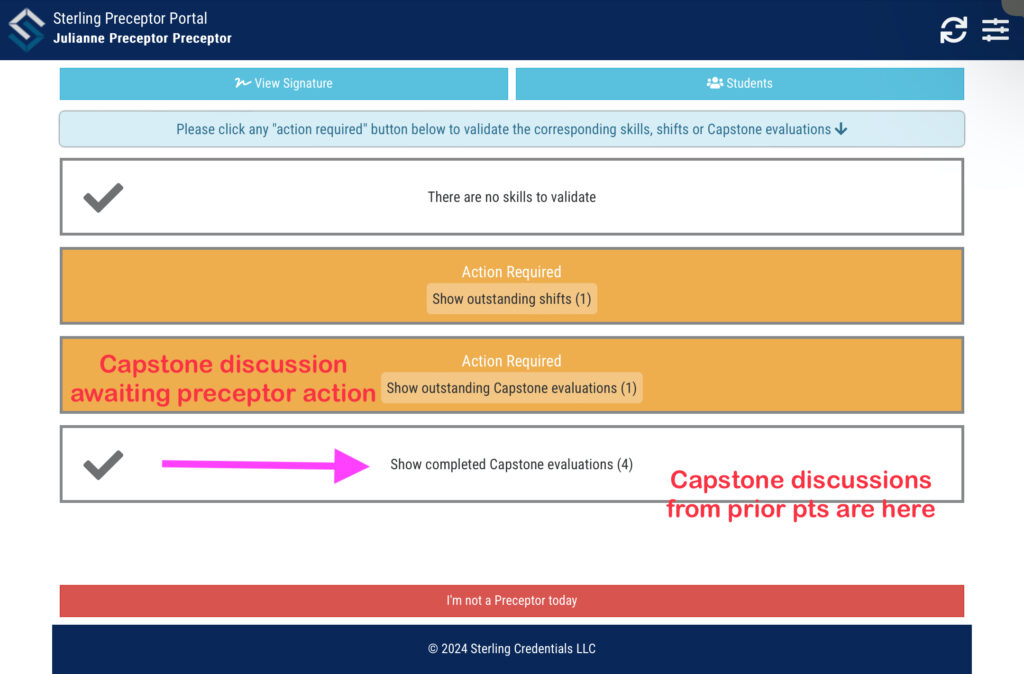A custom module to facilitate and record exchanges between student and mentor.
What is a “Capstone” experience?
Also known as “Capstone Internship” or simply “Internship” throughout CAAHEP and CoAEMSP documents, it is summarized (by us) as:
A predetermined number of shifts on the ambulance with a single (or at most two) preceptor(s) which happens after all other curriculum delivery with the aim of demonstrating to the preceptor that the student can be certified as “entry-level” competent in paramedic practice.
How did we develop that summary description?
Don’t take our word for it. Here are the various source materials from the CoAEMSP and CAAHEP.
From the CoAEMSP Interpretations : “Progression of learning must be didactic/laboratory integrated with or followed by clinical/field experience followed by the capstone field internship, which must occur after all core didactic, laboratory, and clinical experience. (Standard III.C.1. Curriculum)” (pg 22 of the CoAEMSP Interpretations of the CAAHEP 2015 Standards and Guidelines –updated Nov 2023)
“The capstone field internship allows the intern the opportunity to complete team leads and allows the preceptor to evaluate intern competency. The capstone field internship must occur after all clinical content of the Paramedic curriculum has been completed and the individual can assess and manage all patient ages, types, and conditions.” (P14, Interpretations)
You can read the actual 2024 curriculum standards on page 10 of the “Standards and Guidelines for the Accreditation of Educational Programs in the Emergency medical Services Professions.“
It is considered best practice that a single (or at most two) preceptor serve the student during capstone. This allows a comprehensive relationship to develop (including mutual trust) so that, at the end, “The program must provide evidence of the completion of the training of capstone field internship preceptors by dated rosters of participants, on-line logs, signed acknowledgement by the capstone field internship preceptor (pt 14, Interpretations).”
Sequencing view as per CoAEMSP
The image below was pulled from a CoAEMSP presentation regarding capstone preceptors. As you can see from the far right side, the Capstone Field Internship is last in the process and must culminate in the minimum number (SMC Table 4) of defensible (as defined by your program documents) Team Leads.
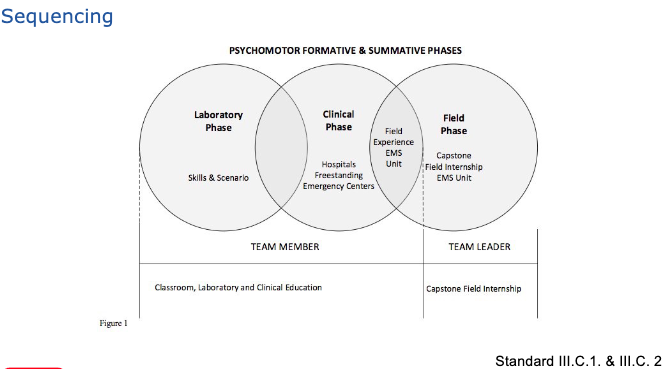
The Sterling Credentials Capstone Discussion Process
The student will start their shift documentation and add a patient. As soon as the patient is created, the student may initiate the Capstone Discussion. This should be done after every call so that incremental improvements may be implemented across the entire Capstone process.
The student should NOT be surprised at the end of Capstone/Internship by weaknesses identified by the Capstone/Internship mentor. Feedback should be immediate and honest.
Since many preceptors have not had extensive training in corrective feedback conversations, we aim to help the mentor to both deliver feedback and make it as painless as possible on both parties.
1. Students assesses self
The student will initiate the discussion by completing a self-assessment. Sterling will not allow the student to lock a pt or close the shift if the discussions have not been started.
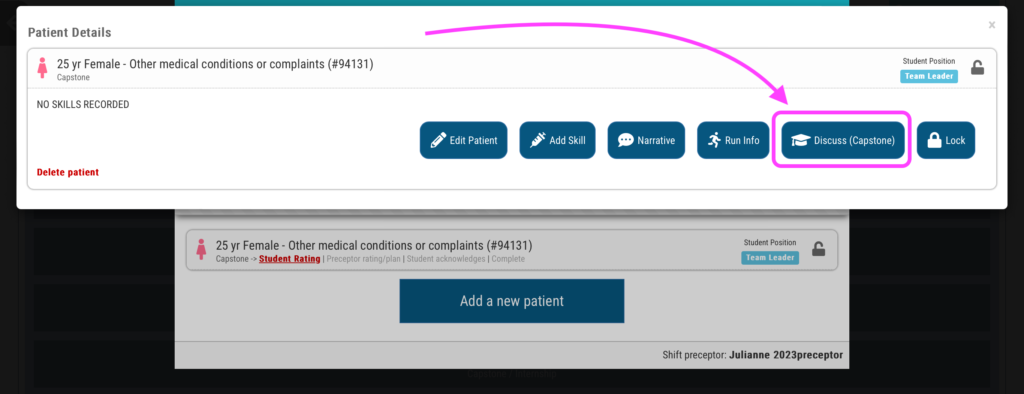
2. Preceptor assesses
Once the student hits the “Submit” button, Sterling will message the preceptor (via SMS or email–whichever they have chosen) to complete the evaluation of the call.
The preceptor visits the link provided and initially sees their dashboard where they will click the orange bar labeled “Show outstanding Capstone Evaluations”:
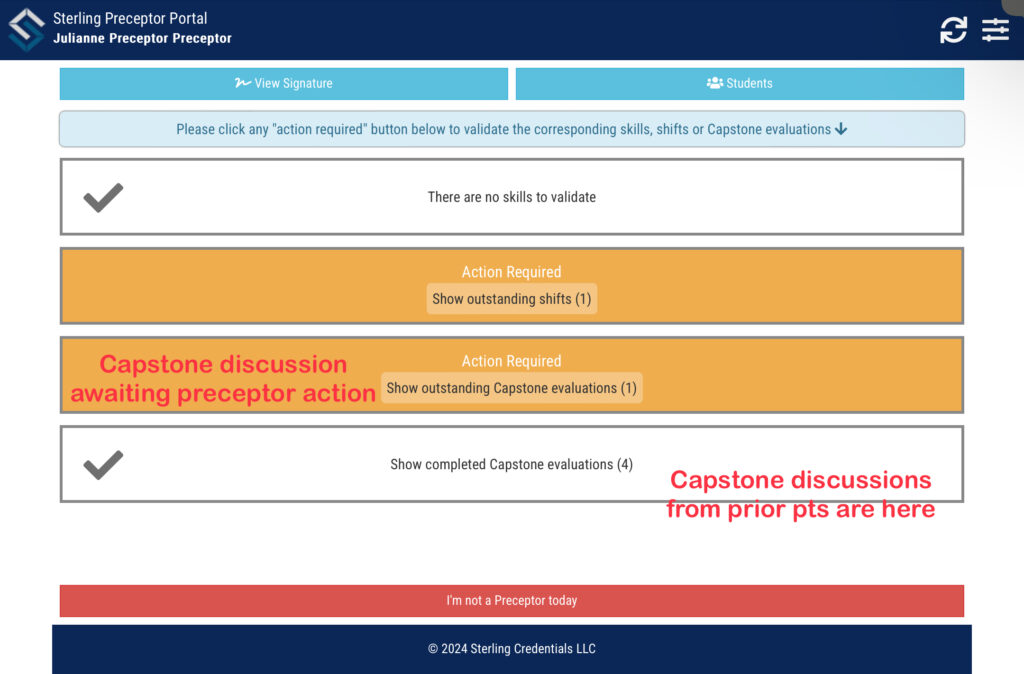
2a. Assessment items
The preceptor will then be able to see the student self-assessment and enter their own opinion of performance.
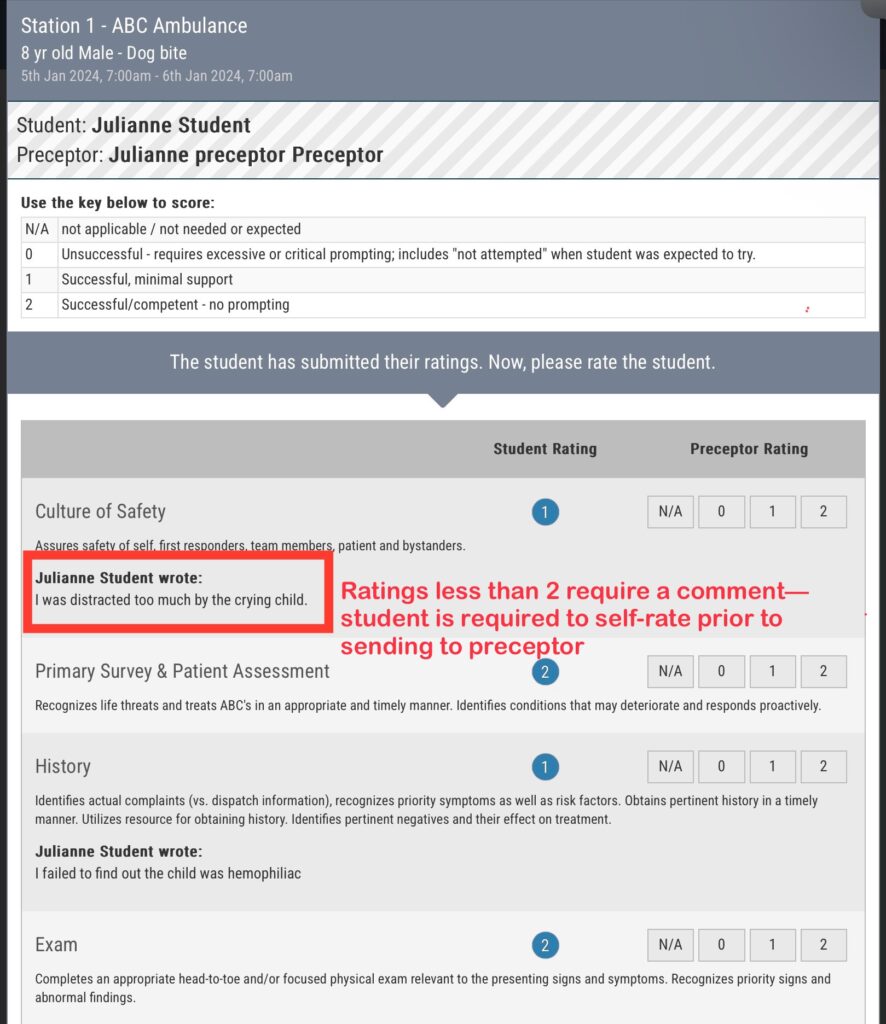
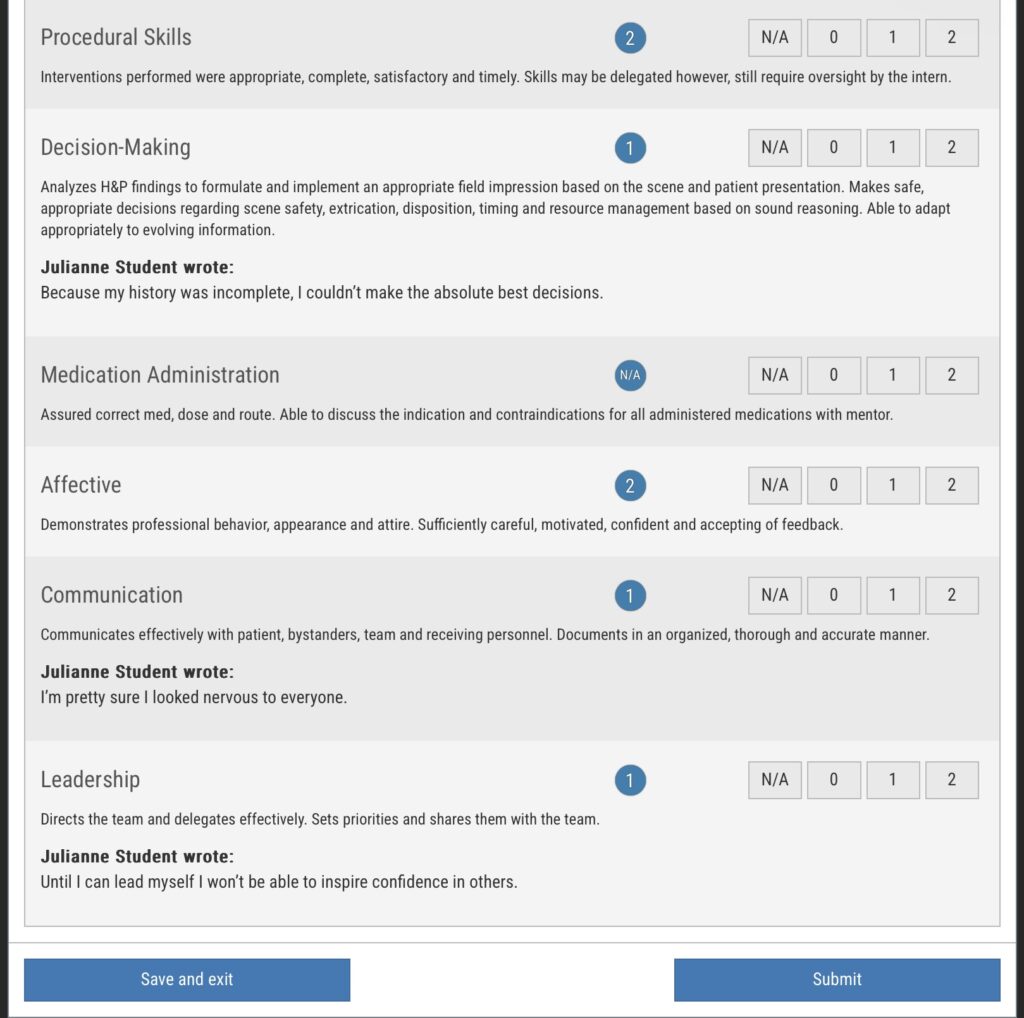
3. Improvement Plan
Best practice involves summarizing the findings in a digestible way for the learner. To enhance this, Sterling has a built-in improvement plan.
It is very important to clearly state to the student the preceptor’s expectations for THE action expected on the next call where the guidance is applicable. The mentor should give a solid, measurable action the student should internalize and make part of their practice.
The review and plan should not be released to the student until such time the preceptor is ready to have a face-to-face review of the findings.
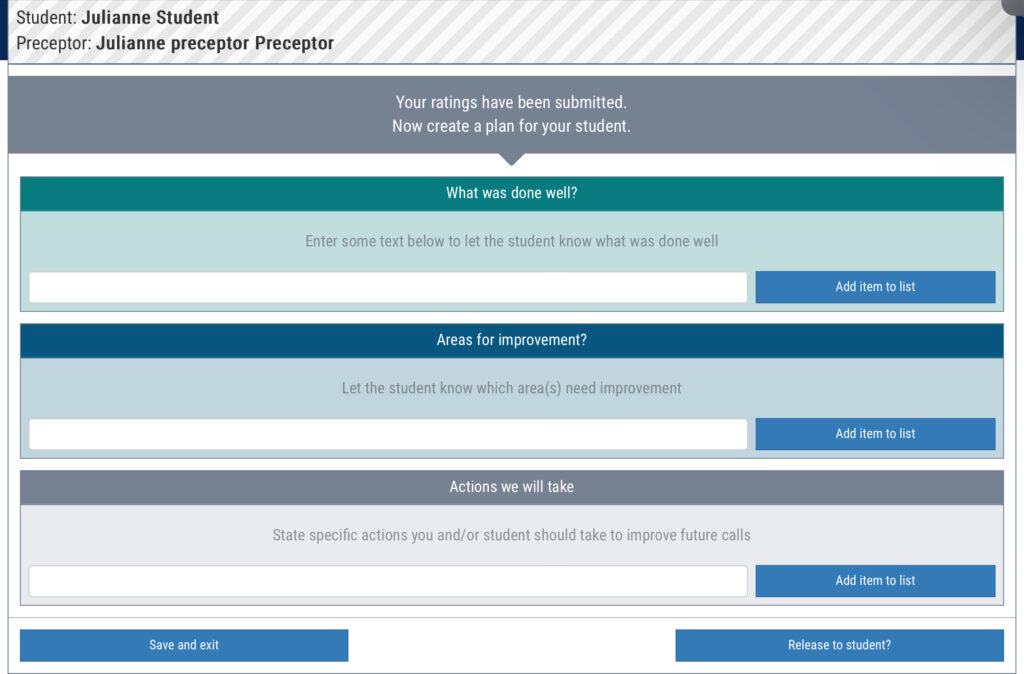
4. Student Acknowledgement
The final step of this process is for the student to Acknowledge receipt of the information. This does not necessarily mean they AGREE with the feedback–only that they received the discussion.
The student will receive a notification to complete the tracking process within Sterling. This is done by again clicking the “Capstone Discussion” button.

Historical View for Mentor
Capstone Preceptors will have access to the reviews they have done for 30 days from the student’s last shift with them. If the student has more than one capstone preceptor, each will be able to see feedback given by the other–this is meant to unify communications and improve the student’s experience.
